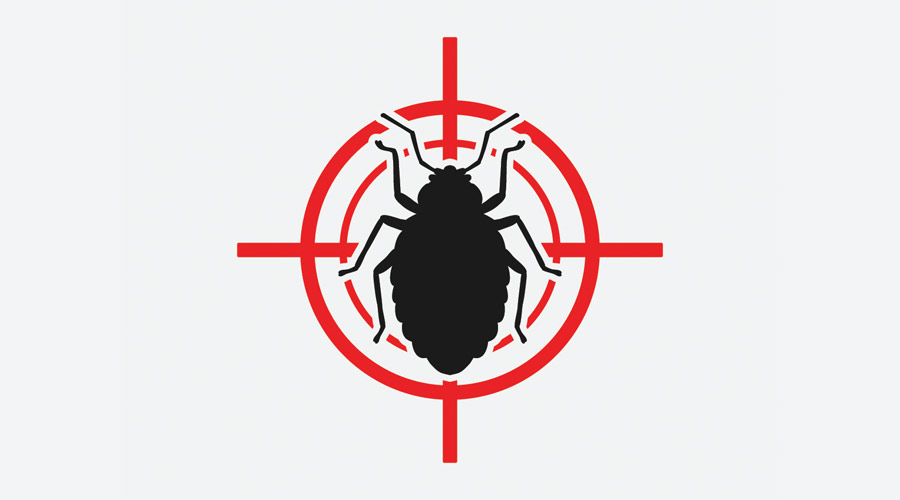
The Windy City is settling in as the #1 city on Orkin’s Top 50 Bed Bug Cities List for the third year in a row. Chicago, New York and Philadelphia hold onto the top three spots, ranking first, second and third, respectively. Los Angeles saw the largest jump this year, moving up seven spots into the Top Five, with Cleveland (#4) and Raleigh (#20) each moving up the list by four spots.
With “National Shop for Travel Day” taking place on January 10, travelers are being reminded to start planning for vacation, including exploring travel accommodations. As Americans begin to book hotels for 2023 and beyond, it is critical for businesses to have bed bug protection in place and for staff to know how to identify and thoroughly check for bed bugs within hotel rooms and other facilities.
The list is based on treatment data from the metro areas where Orkin performed the most bed bug treatments from Dec. 1, 2021 – Nov. 30, 2022. The ranking includes both residential and commercial treatments:
1. Chicago
2. New York (+1)
3. Philadelphia (-1)
4. Cleveland-Akron, Ohio (+4)
5. Los Angeles (+7)
6. Detroit (-2)
7. Indianapolis (-1)
8. Baltimore (-3)
9. Washington, D.C. (-2)
10. Columbus, Ohio (-1)
11. Champaign, Illinois (+2)
12. Grand Rapids, Michigan (-1)
13. Cincinnati (-3)
14. Charlotte (+1)
15. Denver (+2)
16. Atlanta (-2)
17. Dallas-Ft. Worth (-1)
18. Pittsburgh (+2)
19. Charleston, West Virginia (+3)
20. Raleigh-Durham (+4)
21. Flint, Michigan (+2)
22. San Francisco (-3)
23. Norfolk, Virginia (+2)
24. Greenville, South Carolina (-3)
25. St. Louis (-7)
26. Richmond, Virginia
27. Youngstown (+10)
28. South Bend, Indiana (+5)
29. Buffalo, New York (-1)
30. Knoxville (-1)
31. Cedar Rapids, Iowa (-1)
32. Omaha, NE (-5)
33. Nashville (+1)
34. Dayton, OH (-2)
35. Ft. Wayne, Indiana (+1)
36. Harrisburg (+6)
37. Davenport (-2)
38. Toledo (-7)
39. Seattle (+5)
40. Milwaukee (-2)
41. Tampa (-1)
42. Lansing, Michigan (+6)
43. Greensboro, North Carolina
44. Houston (-3)
45. Miami (-6)
46. Lexington, Kentucky (+1)
47. Orlando (-1)
48. Peoria (-3)
49. Louisville, Kentucky (-3)
50. Lincoln, Nebraska
Typically, bed bugs are 3/16 inch long, red to dark brown in color and are mostly nocturnal insects that come out of hiding to take blood meals from sleeping humans. These pests are hematophagous, which means blood is their only food source. They can travel from place to place with ease, clinging to items such as luggage, purses and other personal belongings.
“Bed bugs are extremely resilient, making them difficult to control. As people begin to ramp up their travel plans this year, it’s important they know how to protect themselves through pest identification and proper control,” says Ben Hottel, Orkin entomologist. “Contrary to popular belief, bed bugs are visible to the naked eye, but are excellent at hiding. Involving a trained professional at the sight of a bed bug introduction is recommended.”
Bed bugs are known for rapid population growth. Female bed bugs can deposit one to five eggs a day and may lay 200 to 500 eggs in their lifetime. They can survive for several months while waiting for their next blood meal, so they’re likely to emerge when a food source, e.g., humans or animals, become available.
"While it’s important to be aware of bed bug infestations within hotels, practicing precautions in other aspects of travel are also important. Taxis, buses and airplanes are also common bed bug hiding places, allowing these pests an opportunity to hitch a ride with unsuspecting travelers. Examining clothing and luggage regularly while traveling can help to catch a bed bug infestation in the early stages,” says Hottel.
Here are proactive tips Orkin recommends to prevent bed bugs:
- Inspect your facility for signs of bed bugs regularly. Check the places where bed bugs hide during the day, including mattress tags and seams, and behind baseboards, headboards and electrical outlets.
- Decrease clutter to make it easier to spot bed bugs on your own or during professional inspections.
- Examine all secondhand furniture before bringing it inside your business.
Remember the acronym S.L.E.E.P. to inspect for bed bugs:
- Survey the room for signs of an infestation. Be on the lookout for tiny, ink-colored stains on mattress seams, in soft furniture and behind headboards.
- Lift and look in bed bug hiding spots: the mattress, box spring and other furniture, as well as behind baseboards, pictures and even torn wallpaper.
- Elevate bags or luggage away from the bed and wall. The safest places are in the bathroom or on counters.
- Examine luggage carefully while repacking and once you return home from a trip. Always store luggage away from the bed.
- Place all dryer-safe clothing from your luggage in the dryer for at least 30-45 minutes at the highest setting after you return home.
With more than 125 years of experience with bed bugs and state-of-the-art tools and products, Orkin is well-equipped to assess your bed bug problem, offer trainings for short-staffed hospitality teams and mount a strategic response to rid your business of the pest and provide maximum protection.
To check last year's rankings, click here. Additional bed bug prevention tips can be found here.

 Celebrating BSCAI's 60th Anniversary eBook
Celebrating BSCAI's 60th Anniversary eBook The Down and Dirty on Cleaning in Virus Season
The Down and Dirty on Cleaning in Virus Season How Surfactant Use is Expanding in Commercial Cleaning
How Surfactant Use is Expanding in Commercial Cleaning